Are Scientists Working on Sending Rockets to Other Galaxies?
Image from NASA
Ask a Rocket Scientist
by Rob Webb on March 30, 2022First Name:Evan
Grade: 2
What is your favorite planet or star? Mars
What is your favorite rocket? James Webb Space Telescope
Question: Are scientists working on sending rockets to other galaxies?
Thanks for your great question, Evan! I also think Mars is a cool planet! I used to be involved with the Mars Atmosphere and Volatile Evolution (MAVEN)1 as part of the main operations team, which is a NASA mission designed to explore the upper atmosphere of the Red Planet. Although many of the goals behind this mission are based on unbiblical concepts, like evolution, it was still a really cool mission to work on! Because, from a biblical worldview, I got to learn more about God’s amazing design of the planet Mars that was created on Day 4 of creation week!
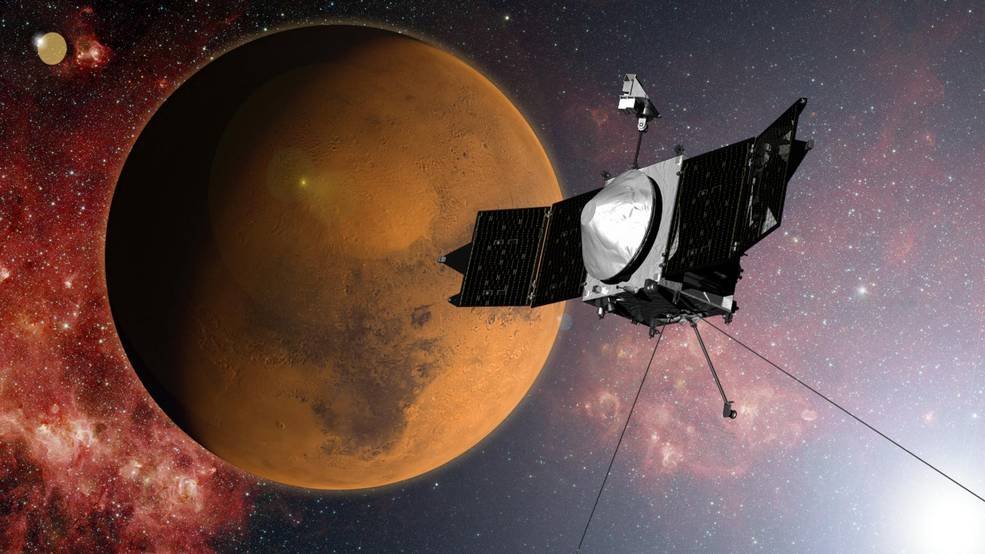
Artist illustration of the MAVEN spacecraft around Mars
Image from NASA
I also think the James Webb Space Telescope (JWST)2 is a really awesome mission! The launch vehicle that flew this huge telescope into space is called the Ariane 5 rocket,3 which is a very big (heavy-lift) rocket that’s operated by the European Space Agency (ESA). The latest news4 from NASA is that it has now aligned its mirror segments, which is a big deal! This means the telescope is now that much closer to delivering some awesome views of God’s creation in the cosmos! This mission is great because it allows us to truly study the heavens and admire the glorious handiwork of God (Psalm 19:1).
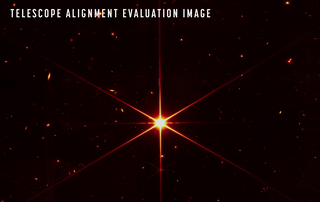
Red filtered image by JWST for mirror alignment of the star 2MASS J17554042+6551277
Image from NASA
Now to your question, reworded another way, are there any current or future planned missions to send spacecraft to other galaxies? Yes, there are actually quite a few! Currently, there’s a couple of old NASA spacecraft you might’ve heard of called Voyager 1 & 2 that launched in 1977, which are now way outside our solar system and flying further into outer space every day. One day, assuming nothing stops them in their tracks, they will eventually run into another star system many light-years5 away from us.
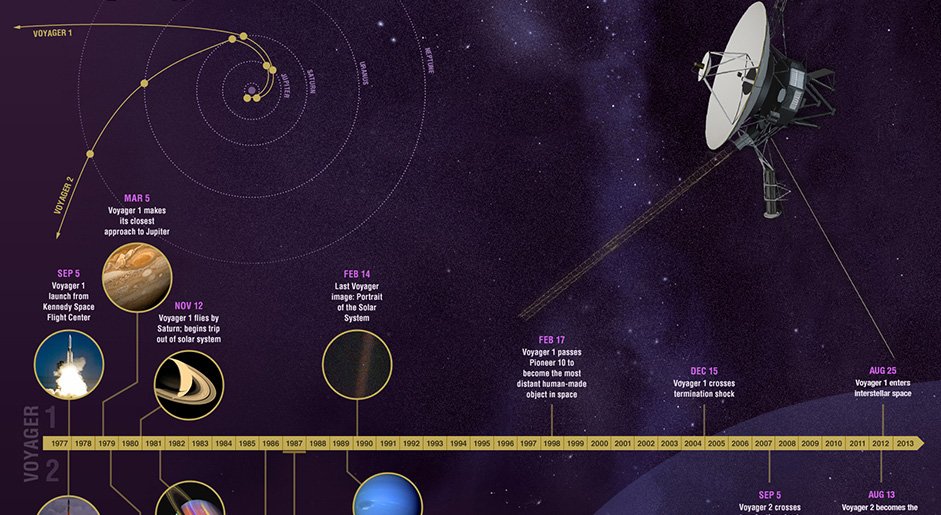
Artist illustration of the MAVEN spacecraft around Mars
Image from NASA, https://voyager.jpl.nasa.gov/assets/images/galleries/timeline.jpg
But sadly, at Voyager’s current speed, we won’t have the privilege of ever seeing this happen. This is because God created the universe really big!6 For example, if Voyager 1 were to be flying toward our nearest star system, Alpha Centauri, which is about 4.37 light-years (25.6 trillion miles) away, then it would take more than 75,000 years to reach it. That’s a really long time!
Unfortunately, all our long-journey spacecrafts take many years just to travel within this solar system, like NASA’s New Horizons7 spacecraft, which took nearly 10 years to reach Pluto. That’s because our standard rocket thrusters need to carry a lot of propellant for these long trips (like needing a lot of fuel in a car for a long road trip), which then makes the spacecraft (relatively) heavy and slow.
So instead of using this traditional method of space travel, in 2016, some really smart scientists came up with an exciting new project called the Breakthrough Starshot initiative8 that plans to eventually send very small (microchip-size) “Nanocrafts” to nearby star systems—using giant powerful lasers on Earth to propel them!
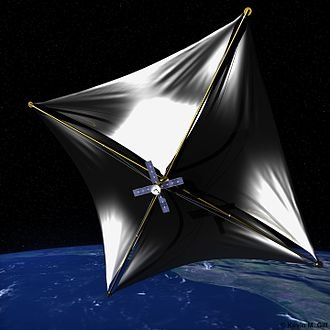
Artist illustration of light sailing in space
Kevin Gill from Nashua, NH, United States, CC BY-SA 2.0 https://creativecommons.org/licenses/by-sa/2.0, via Wikimedia Commons
The scientists involved with this project hope to one day fly these tiny spacecraft at a speed of nearly 20% the speed of light (that’s like 37,200 miles per second!) to Alpha Centauri on a 20-year journey. The plan is to build super powerful lasers (100+ gigawatts) on Earth that will shoot directly at the huge sails attached to each of the Nanocrafts.9
The general idea behind propelling these little space travelers using lasers is based on a really cool concept called “light sailing.”10 To better understand this, imagine a sailboat on the open water that’s being constantly pushed (propelled) forward by the wind hitting the sails.

Image by Rob Webb, derived using public domain image from Openclipart
It’s the same sort of concept with light sailing in space! But rather than using wind, light-sails use particles of light (like photons coming from the sun or giant lasers on Earth) to move forward. And from a whole lot of these particles, all providing continuous tiny “pushes” against the really big light-sail, the spacecraft will build enough momentum over time to make it go really fast!11
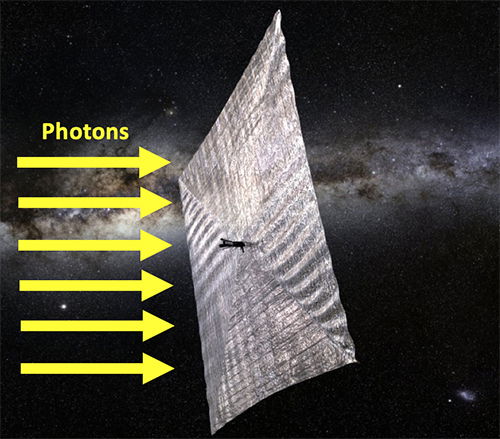
Artist illustration of the MAVEN spacecraft around Mars
Image by Rob Webb, derived using NASA image
Overall, these exciting space-travel missions, like the Breakthrough Starshot initiative and others, are great examples that show the amazing creative abilities that God gave us. The Bible (Genesis 1) says that God, who is infinite in creativity and wisdom, created everything in the universe in six days by simply speaking all things into existence through the mighty word of his power. And being made in the image of our awesome God (Genesis 1:27), we have brilliantly creative minds that can figure out how to do cool things in space, like light-sailing across the cosmos!
And, more importantly, let’s continue to praise our Lord and Savior Jesus Christ, who consistently upholds and sustains the universe by his power (Hebrews 1:1-3), for making space-travel a possible (and fun) reality!
Bonus Response
First Name:Nathalia
Grade: 10
What is your favorite planet or star? Polaris
What is your favorite rocket? The candy Rockets
Question: If the earth is only 6,000-8,000 years old, how are we able to see stars that are billions and billions of lightyears away?
Hi Nathalia, thanks for your question! Polaris (the “North Star”) is also my favorite star too! It’s definitely a great star that I believe was created by God as a gift to navigators in the Northern Hemisphere, such as ancient sailors to help them navigate the vast open seas. And I’m assuming the “candy rockets” you’re referring to are also known as Smarties? If so, I like those too (although I try to stay away from sugar as much as possible!)
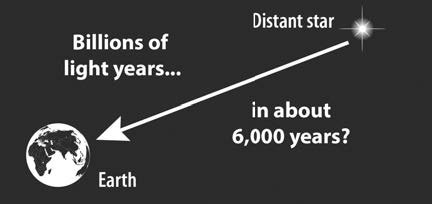
Image from The New Answers Book 4, Chapter 21.
Now to your question, which is typically referred to as the “Distant Starlight Problem,” meaning how did God get the light from very distant stars (many light years away) to Earth in only the thousands of years based on the biblical age of the universe (as defined by the Bible). This is a great question that I’m glad you asked since this is a very common objection to biblical creation in the realm of astronomy.
We actually have a very helpful (short) video on our Kids Answers site here, by Dr. Jason Lisle, that helps briefly explain a few possible answers to this problem (which really isn’t a “problem” at all for an all-powerful God) from a biblical worldview. There are also many good resources available in our store that will help answer this question, including the Answers Books series (1–4),12 which (if you haven’t already) we encourage you to keep in your library! Remember it’s important that we, as children of God, always start all our thinking with God’s Word (using biblical “goggles” to view the world around us) as our foundation to answer these types of questions (Proverbs 1:7). Hope this helps and God bless!
Ask Your Question
Ask a parent to help you submit your space-related question to Rob Webb today! Don't forget to check back next week to see if your question was chosen!
Footnotes
- You can learn more about MAVEN here: https://www.nasa.gov/mission_pages/maven/overview/index.html.
- Have a parent help you go to our main site to read my article, “A Biblical Response to the James Webb Space Telescope (JWST) Launch” at https://answersingenesis.org/astronomy/biblical-response-james-webb-space-telescope/.
- You can learn more about the JWST rocket launch here: https://webb.nasa.gov/content/about/launch.html.
- All the latest news on JWST can be found here: https://www.jwst.nasa.gov/content/webbLaunch/news.html.
- It’s important to remember that light-years are a unit of distance (not time), which represents the distance that light can travel, in a vacuum, over one year (one light-year is equal to almost 6 trillion miles).
- Latest estimates say the diameter of the observable universe is about 93 billion light-years. That’s huge!
- You can learn more about the New Horizons mission here: https://www.nasa.gov/mission_pages/newhorizons/main/index.html.
- You can check out the images that help illustrate this project here: https://www.space.com/32554-breakthough-starshot-interstellar-alpha-centauri-nanocraft-pictures.html.
- There are still many challenges that scientists need to first solve, including (just to name a few) Earth’s atmospheric interference, stability of the sails, travelling through interstellar mediums (like dust and gas), precise aiming of the probes, power storage, long duration of functionality, etc. Maybe you’ll be the one to help solve some of these challenges!
- You can learn more about solar (light) sailing here: https://www.nasa.gov/pdf/134645main_solar_sail_fs.pdf.
- This process of building momentum is based on Newton’s Laws of Motion, which you can learn more about here: https://www.nasa.gov/stem-ed-resources/Introduction_to_Newtons_Laws.html.
- The New Answers Book series can be found at this link in our store: https://answersingenesis.org/store/product/new-answers-book-combo/. There is also a set for kids at: https://answersingenesis.org/store/product/answers-book-for-kids-complete-set/.
- © 2024 Answers in Genesis
- Privacy Policy
- Contact
- About
